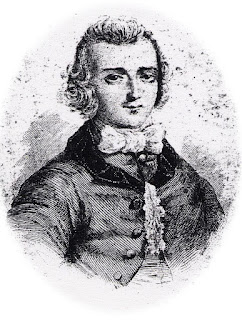Foreshadowing: A Powerful Literary Device - An exciting read makes a committed reader.
 |
| Copyright: Janet Cameron |
Foreshadowing means to indicate or show in advance a future happening and the use of a foreshadowing scene can greatly increase tension. It’s a matter of helping the reader make the right connections through suggestion, sometimes direct and sometimes subtle. Symbols and omens are also useful devices.
Chekhov’s Gun is a well-known example of foreshadowing. In an article on the New World Encyclopedia website, the (unnamed) author quotes the words Chekhov wrote in a letter in 1889: “If you say in the first chapter that there is a rifle hanging on the wall, in the second or third chapter, it absolutely must go off. If it’s not going to be fired, it shouldn’t be hanging there.” To draw the reader's attention to the drama hinted at by foreshadowing, references to the relevant object may be repeated in diverse ways.
Example of Foreshadowing from Author, Stephen King:
This excerpt comes from "The Moving Finger" by Stephen King, from his collection Nightmares and Dreamscapes.
“What are those?” he asked. “Over there?”
“Those?” the clerk asked. “Electric hedge-clippers. We got two dozen of ‘em last June, but they didn’t move worth a damn.”
“I’ll take a pair,” said Howard Mitla. He began to smile, and the clerk later told the police, he didn’t like that smile. Not one little bit.
Hilary Mantel’s Foreshadowing First Paragraphs:
In her excellent but sinister novel, Every Day is Mother’s Day, Hilary Mantel foreshadows the central theme of her book – madness – in the first two paragraphs. “It was always hard to know what would please Muriel. That winter, when the old man fell on the street and broke his hip, Muriel had personally split her sides… It wasn’t often she had a good laugh.”
We know – immediately – that Muriel is going to be trouble.
Literary Examples of Foreshadowing
Foreshadowing is endemic in literature, for example, the three witches in MacBeth foreshadow the evil to come as they concoct their ghastly brew.
In John Steinbeck's gripping and unforgettable novel Of Mice and Men, poor, confused Lennie starts off by accidentally killing his pet mice. Then, he kills his puppy while stroking it, leading to the final terrible act when, tempted by Curly's precocious wife and then frightened by her screams of terror, he accidentally breaks her neck.
Don’t Get Clever with your Reader – S/he Won’t Like It.
It’s advisable to be honest in the use of foreshadowing. Tossing a “red herring” into the mix, ie: a false suggestion intended to throw the reader off-track, usually doesn’t work. Readers can feel cheated and angry at being fooled. So do make sure your foreshadowing is entirely relevant to your story.
Foreshadowing is fun and effective and should not be ignored as an essential literary device for imparting excitement to your prose and encouraging the reader to read on. You can even experiment with adding a foreshadowing scene after you have finished writing the first draft of your story.
Sources:
Nightmares and Dreamscapes, Stephen King, Viking Press, 1993.
Every Day is Mother's Day, Hilary Mantel, Chatto & Windus, 1985.
Of Mice and Men, John Steinbeck, First published by Covici Friede, 1937.
New World Encyclopedia
Originally published on Suite101: Foreshadowing - Increase Tension in Your Story | Suite101.com http://suite101.com/article/foreshadowing----increase-tension-in-your-story-a369294#ixzz22FC3vq5v


Comments